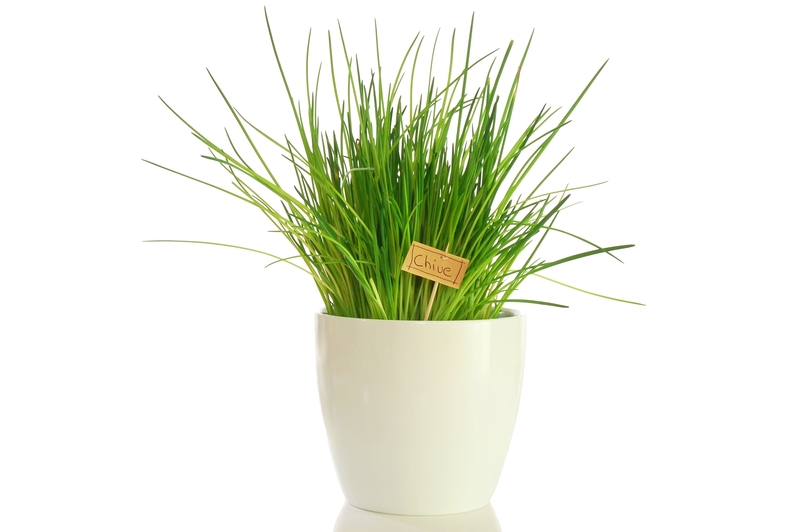Plants that Keep Bugs Away: 24 Varieties
Plants that Keep Bugs Away: 24 Varieties
Are you tired of using chemical pesticides and repellents to keep bugs away from your home and garden? Nature has provided us with effective, natural ways to combat these pesky intruders. By incorporating certain plants into your landscape, you can deter insects organically. Let's explore 24 varieties of plants that keep bugs at bay.
Lavender
The pleasant scent of lavender is a favorite among humans, but it's a powerful deterrent for mosquitoes, moths, and fleas. Planting lavender around your home can help create a bug-free environment.

Marigold
Marigolds contain pyrethrum, a compound used in many insect repellents. Planting marigolds in your garden helps to keep aphids, mosquitoes, and even rabbits away.
Citronella Grass
Citronella is a well-known ingredient in mosquito repellents. This grass has a strong lemon scent that keeps mosquitoes at bay. It thrives in warm climates and makes an excellent addition to sunny gardens.
Basil
While basil is an excellent herb for culinary purposes, it's also effective in repelling mosquitoes and flies. Plant basil in pots or directly in the ground near doors and windows.
Rosemary
Rosemary is another dual-purpose plant. Its woody scent helps repel mosquitoes, flies, and other bugs. It's also a hardy herb, making it a great addition to any garden.
Mint
Mint is not just a refreshing herb for your dishes but also a powerful insect repellent. It can deter mosquitoes and ants. However, be cautious as mint can be invasive, so it's best grown in pots.
Chrysanthemum
The compound pyrethrum found in chrysanthemums is toxic to many insects including ants, roaches, mites, ticks, and lice. Plant them in your garden to add color and keep your space bug-free.
Petunia
Petunias are often referred to as "nature's pesticide" because they repel aphids, tomato hornworms, asparagus beetles, leafhoppers, and squash bugs. They are also easy to grow and add a splash of color to your garden.
Alliums
Alliums are a part of the onion family and are great for repelling insects like aphids, carrot flies, and cabbage worms. They can be planted amongst your vegetables for added protection.
Geranium
Geraniums, especially the citronella variety, contain citronella oil which deters mosquitoes and other bugs. They are ideal for hanging baskets or window boxes.
Bay Leaves
Bay leaves are known to repel flies, roaches, and ants. They are easy to grow in pots and can be brought indoors during the winter.
Fennel
Fennel attracts beneficial insects like ladybugs which prey on aphids. It can also repel slugs and snails.
Thyme
Thyme not only enhances the flavor of your dishes but can repel bees, cabbage worms, and whiteflies. It grows well even in poor soil conditions.
Sage
Sage has a strong aroma that helps to keep mosquitoes and other insects away. It also thrives in dry, sunny conditions, making it an easy addition to your garden.
Nasturtiums
Nasturtiums are known to repel whiteflies and squash bugs. They also attract predatory insects that eat other pests.
Catnip
While catnip drives cats wild, it's a strong mosquito repellent. Studies have shown it to be more effective than DEET, the common ingredient in many chemical insect repellents.
Garlic
Not only is garlic a culinary staple, but it's also an effective insect repellent. Planting garlic can help deter a variety of insects including mosquitoes, aphids, and cabbage worms.
Lemon Balm
Lemon balm has a lemony scent that naturally repels mosquitoes. It's also easy to grow, thriving in both sunny and shaded areas.
Bee Balm
Bee balm attracts beneficial insects that prey on garden pests. Its aromatic leaves are also known to repel mosquitoes.
Ageratum
This plant has a characteristic scent that mosquitoes find repellent. Ageratum contains coumarin, which is used in commercial insect repellents.
Lantana
Research has shown that lantana flowers can reduce the number of mosquitoes in areas where they are planted. They thrive in warm climates and add vibrant colors to your garden.
Pennyroyal
Pennyroyal is a member of the mint family and can repel fleas and mosquitoes. It's best planted in places where your pets frequent.
Tansy
Tansy has been used historically as a bug repellent, especially against ants, fleas, and flies. Its small yellow flowers also add a pop of color to the garden.
Pitcher Plant
A carnivorous plant, the pitcher plant can trap and digest insects like flies and ants. It's a unique and effective natural pest control option for your garden.
Pros and Cons of Using Plants to Repel Bugs
Like any approach, using plants to repel bugs has its benefits and drawbacks.
Pros
- Eco-friendly and non-toxic compared to chemical repellents.
- Provides additional benefits such as culinary uses and aesthetic appeal.
- Encourages the presence of beneficial insects while deterring harmful ones.
Cons
- Not as instantly effective as chemical repellents.
- Some plants may be invasive if not properly managed.
- Requires regular maintenance and proper placement for optimal effectiveness.
Tips for Using Bug-Repelling Plants
- Plant a variety of these species to cover a broad spectrum of insects.
- Place potted plants near entry points and common outdoor areas to maximize their effect.
- Regularly prune and maintain the plants to ensure their continued growth and potency.
- Combine with other natural methods like essential oil sprays for added protection.

Takeaways
Plants can be a highly effective, natural, and eco-friendly way to keep bugs at bay. By carefully selecting and placing these 24 varieties in your garden, you can create a bug-free oasis that's pleasing to the eye and beneficial for your health and wellbeing.
Conclusion
Incorporating bug-repelling plants into your garden and around your home is a sustainable and natural way to manage pests. With the variety of plants available, you can find options that not only keep bugs away but also enhance the beauty and utility of your garden. Whether you're an avid gardener or just looking for a simple solution to pest problems, these plants offer an effective and environmentally friendly alternative.





